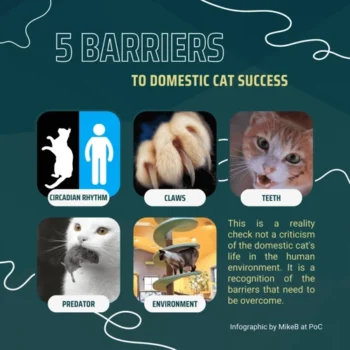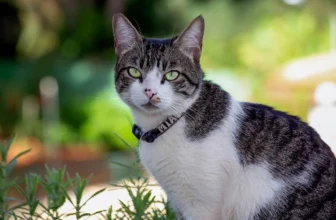If you’re involved in American Wirehair breeding, you’re likely aware of the many factors that can impact the success of this endeavor. From genetics to the environment, selecting the right breeders to proper training and socialization, there’s a lot to consider. In this article, we will explore the key factors that can affect the success of American Wirehair breeding, as well as strategies for successful breeding and handling breeding failures. Whether you’re a seasoned breeder or just getting started, read on to learn more about this fascinating and rewarding hobby.
What is the American Wirehair Breeding?
American Wirehair breeding is a unique process that involves the reproduction and selection of American Wirehair cats with desirable traits. The American Wirehair is a breed of domestic cat with a distinctive wiry coat that came about from a spontaneous mutation. This breed has a friendly and playful personality, making them a popular choice among cat lovers.
The breeding process involves selecting two cats, a male and a female, to mate based on their genetics, health, and temperament. The goal of American Wirehair breeding is to produce healthy kittens with consistent physical and behavioral traits that meet breed standards.
One of the primary characteristics of American Wirehairs is their unique coat, which is thick, dense, and wiry. This coat requires minimal grooming and is resistant to matting, making them a low-maintenance breed. However, American Wirehair breeding isn’t just about the coat. It also involves selecting for other traits such as eye color, body size, and temperament.
Breeders must carefully consider the genetics of their breeding pair to ensure that they do not pass on any inherited diseases or health issues to their offspring. They must also consider the risk of genetic disorders that are common in this breed and take steps to avoid them. If you want to learn more about American Wirehair genetics, follow this link: /american-wirehair-genetics/
American Wirehair breeding involves pregnant queens and the different stages of pregnancy. It’s important for breeders to provide proper nutrition, care, and attention to the pregnant queen and her kittens. Breeding pairs should be carefully selected to produce healthy offspring, and the entire process should be conducted responsibly. For more information on responsible breeding of American Wirehairs, click here.
American Wirehair breeding is a process of carefully selecting two cats to mate based on their genetics and desirable traits to produce healthy kittens that meet breed standards. This process involves careful attention to genetics, environment, and the reproductive cycle of the breeding pair.
Key Factors that Affect American Wirehair Breeding
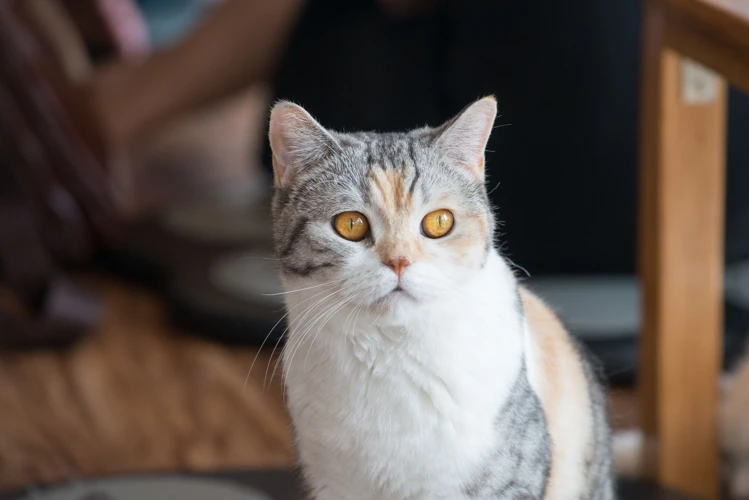
Breeding a healthy litter of American Wirehair cats requires a breeder to pay attention to several key factors. Some of the most significant elements that affect American Wirehair breeding are genetics, environment, breeder selection, and training and socialization.
Genetics play a crucial role in American Wirehair breeding, just like in any other animal breeding process. Breeders need to consider the genetic background and testing of both the male and female cats before deciding to breed them. A proper understanding of the genetic makeup of the cats can ensure that they are not carriers of any hereditary diseases, and they can produce healthy offspring. Also, breeders need to look for phenotypic traits that they want to pass on to the next litter, such as coat color, pattern, and thickness.
The selection of breeding pairs is another important factor that influences successful American Wirehair breeding. Breeders should select male and female cats that complement each other in terms of size and phenotype features. This method can help reduce the chance of birth defects in the kittens and increase the overall health of the litter.
The environment plays a crucial role in cat breeding, especially when it comes to American Wirehair cats. Breeders must provide their cats with an optimal environment that is conducive to breeding. The environment should be clean, comfortable, and have enough space for the cats to move around and play. Also, breeders need to ensure that the cats have access to fresh water and a proper diet that can support pregnancy and lactation.
The training and socialization of male and female cats before breeding is also an essential factor that influences successful breeding. Breeders should socialize their cats from an early age and ensure they are comfortable with handling and grooming. This method can make it easier for breeders to train their cats and make them feel comfortable during breeding.
Breeder selection is another significant factor that influences American Wirehair breeding success. Breeders must select the best cats for breeding and ensure that their breeding stock is healthy, genetically tested, and free of any hereditary diseases. Regular check-ups by a veterinarian can ensure the breeding stock is healthy and in excellent condition for breeding.
Breeding American Wirehair cats is a complex process that requires careful consideration and awareness of several important factors. Genetics, environment, breeder selection, and training and socialization are all crucial elements that affect the success of breeders. By paying attention to these factors, breeders can increase the chances of a successful breeding program, producing healthy, high-quality American Wirehair cats.
Genetics
Breeding American Wirehair cats requires a comprehensive understanding of genetics. The distinctive scruffy coat and unique features of this breed result from a mutation of the dominant gene found in the American Shorthair. To breed American Wirehairs successfully, breeders must understand dominant and recessive genes and the potential for genetic disorders to arise. Inbreeding is one technique breeders use to maintain these characteristic traits, but it can also lead to undesirable outcomes. Genetics play a crucial role in the success of American Wirehair breeding, and understanding this area is paramount for healthy breeding practices. For more information on genetic disorders that may arise, check out our page on American Wirehair Breeding Diseases, or for information on coat colors, see our page on American Wirehair Coat Colors. For tips on breeding American Wirehair cats, check out our article on Wirehair Breeder Tips.
Environment
The environment in which American Wirehair cats are bred and raised plays a crucial role in their development and overall success. There are several environmental factors that breeders should consider when attempting to produce healthy and well-adjusted cats.
Noise Levels: High noise levels have been shown to negatively impact feline health and development. When possible, breeders should keep noise levels to a minimum in their breeding facilities. Installing sound-absorbing materials can be helpful in keeping noise levels down.
Lighting: Adequate lighting is crucial for the mental and physical health of American Wirehair cats. Breeders should ensure that their breeding facilities are well-lit and mimic natural sunlight. Failing to provide proper lighting can result in a range of health issues, including behavioral problems, weakened immune systems, and problems with vision.
Air Quality: Proper ventilation is critical for maintaining a healthy environment for cats. Poor air quality can lead to respiratory issues and infections. Breeders should ensure that their facilities have adequate ventilation systems that are regularly inspected and maintained.
Temperature: Temperature plays a significant role in the comfort and overall health of American Wirehair cats. Breeders should maintain a consistent temperature in their breeding facilities, ideally between 65 and 78 degrees Fahrenheit. Cats should have access to warm beds and blankets to help regulate their body temperature.
Hygiene: Proper hygiene is essential for the health of both cats and breeders. Breeders should regularly clean their facilities, including litter boxes, food and water dishes, and bedding. Failure to maintain proper hygiene can lead to the spread of disease and infection.
Considerations should be made for any other environmental factors that could affect the wellbeing of American Wirehair cats. Table below provides a summary of the environmental factors discussed:
| Environmental Factor | Importance | Considerations |
|---|---|---|
| Noise Levels | High | Install sound-absorbing materials |
| Lighting | Crucial | Maintain lighting that mimics natural sunlight |
| Air Quality | Critical | Ensure proper ventilation systems |
| Temperature | Significant | Maintain consistent temperature and provide warm bedding |
| Hygiene | Essential | Regularly clean and maintain facilities |
Taking into consideration all environmental factors is constructive and significant to the breeding success.
Breeder Selection
When it comes to American Wirehair breeding, breeder selection plays a critical role in ensuring success. Choosing the right breeder can mean the difference between healthy, well-adjusted kittens and those with serious health issues and behavioral problems. Breeders who do not have the necessary experience or expertise can also negatively impact the overall quality of the breeding stock.
One of the first things to consider when selecting a breeder is their reputation. Look for breeders who have a solid track record of producing healthy kittens with great temperaments. Some breeders may have a specific focus, such as producing cats for show or for pet homes, so make sure to choose a breeder whose goals align with your own.
Another important factor to consider is the breeder’s knowledge and expertise. Experienced breeders who have a deep understanding of the breed’s genetics and temperament are more likely to produce healthy, well-adjusted kittens. They should be able to provide you with detailed information on their breeding program, including any health checks and genetic testing they perform on their cats.
It’s also important to look for breeders who prioritize the socialization and training of their kittens. A good breeder will work to ensure that their kittens are well-adjusted and comfortable with a variety of people and situations. They should also provide adequate training and socialization before sending their kittens to new homes.
The following table outlines some key considerations when selecting an American Wirehair breeder:
| Considerations | Questions to ask |
|---|---|
| Reputation | Can you provide references from previous kitten buyers? |
| Knowledge and expertise | What is your experience with American Wirehair breeding? |
| Health and genetic testing | What health checks and genetic testing do you perform on your breeding cats? |
| Socialization and training | How do you socialize and train your kittens? |
Remember, the breeder you choose will have a significant impact on the overall success of your American Wirehair breeding efforts. Don’t rush the selection process and make sure to thoroughly research any breeders you are considering to ensure that they meet your standards and goals.
Training and Socialization
Training and socialization are crucial elements in the breeding process for American Wirehair cats. As with any breed, training and socialization establish a strong foundation for a cat’s long-term well-being and successful adaptation to its environment.
| Training | Socialization |
|---|---|
| Training of American Wirehair kittens starts as early as three weeks old when their eyes open and their ears start working. At this stage, kittens learn to recognize their mother’s voice and become familiar with voices and sounds in their immediate environment.
As they grow older, they develop an awareness of their own body, surroundings, and behavior. Breeders should focus on rewarding good behavior and discipline unwanted behavior. Consistency in training is key in establishing good habits early on. |
Socialization involves exposing kittens to a variety of experiences and individuals from a young age. This helps them develop a personality that is adaptable to different situations.
Interaction with people, including children, other cats, and dogs, is essential to help the kittens develop the necessary social skills to be comfortable in different environments. Introducing them to different stimuli, such as toys or different textures, can help them to handle new experiences they may encounter later in life. |
| Training American Wirehair cats should continue throughout their lives to reinforce good behavior patterns and discourage negative ones. With positive reinforcement and consistent discipline, cats can remain well-behaved and lively into their adult years. | Continued socialization is also important, particularly as cats age and encounter changes in their living environment. Introducing them to new experiences and new people can help build their confidence and ensure they remain adaptable to new situations. |
Training and socialization are critical elements in the breeding process for American Wirehair cats. Effective training and socialization help establish a strong foundation for long-term well-being and successful adaptation to their environment. Breeders need to focus on consistency in training and positive reinforcement and introducing kittens to various experiences and individuals to ensure they develop the necessary social skills for a bright future.
Strategies for Successful Breeding
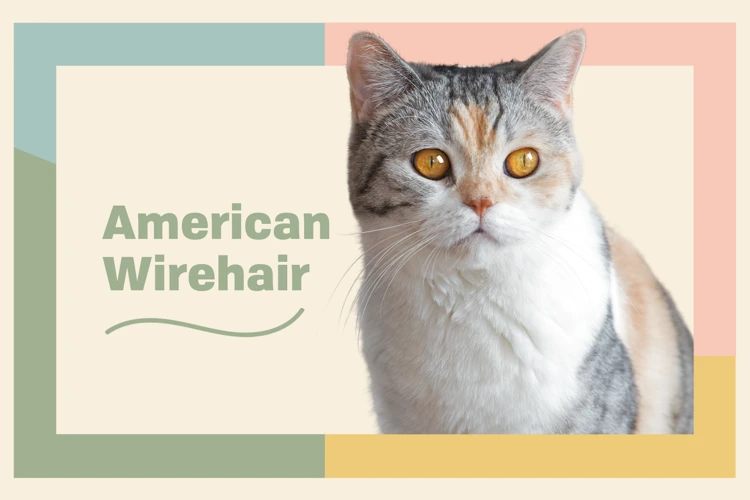
Breeding American Wirehair cats is a challenging task that requires careful planning and execution. To achieve success, breeders need to consider several key strategies that can help ensure the health, happiness, and longevity of the cats they produce.
Focus on Health and Well-being: One of the most critical strategies for successful breeding is to prioritize the health and well-being of your cats. This means providing them with a nourishing diet, regular exercise, and routine veterinary care. Breeding cats should be screened for genetic disorders, and any health issues should be addressed promptly.
Consider the Reproductive Cycle: Another essential strategy for successful breeding is to understand the reproductive cycle of your cats. Cats have specific breeding seasons when they are more receptive to mating, which can vary based on geography and environmental factors. Breeders should use this information to plan their breeding programs and ensure that their cats are in optimal reproductive health.
Establish a Breeding Plan: Successful breeding requires a well-thought-out plan that considers factors such as genetics, temperament, and physical characteristics. Breeders should document their breeding program, maintain accurate records, and stay up to date on the latest breeding techniques and tools.
Breeding two cats can produce a litter with an unpredictable combination of traits due to the principles of genetics. Thus, breeders need to track their breeding results meticulously to identify the achievements and flaws in their breeding program.
Adopting a good breeding plan can help breeders strengthen desirable traits, such as coat color or temperament, while reducing or eliminating unwanted traits such as genetic defects or health complications.
Successful American Wirehair breeding requires the implementation of specific strategies. These strategies should focus on promoting the health and well-being of your cats, understanding the reproductive cycle, and establishing a well-documented breeding plan. By following these strategies, breeders can improve their chances of producing healthy and desirable American Wirehair cats for years to come.
Focus on Health and Well-being
As a responsible breeder, it’s crucial to prioritize the health and well-being of your American Wirehair cats. Ensuring that your breeding cats are in optimal physical condition is not only important for their overall welfare, but it can also have a significant impact on the success of your breeding program. By focusing on health and well-being, you can increase the chances of producing healthy and robust kittens that are desirable to potential owners. In this section, we’ll discuss some essential factors that you need to consider to maintain your American Wirehair’s health and well-being.
Consider the Reproductive Cycle
To ensure a successful American Wirehair breeding program, it is important to carefully consider the reproductive cycle of the cats. This includes understanding the timing of the breeding cycle and how it can impact the likelihood of conception and healthy offspring. Here are some key points to keep in mind when considering the reproductive cycle:
- Timing: Female cats typically go through a reproductive cycle every 2-3 weeks, with periods of fertility lasting around 4-5 days. It is important to track these cycles closely to determine the optimal time for breeding. Breeding outside of this fertile window can reduce the likelihood of conception and result in unsuccessful breeding attempts.
- Age: Female cats typically reach reproductive maturity between 5-12 months of age, while male cats typically reach sexual maturity between 5-7 months of age. It is important to wait until cats have reached this stage of development before attempting to breed them, as breeding too early can result in health issues and complications.
- Health: Both male and female cats should be in good health before beginning a breeding program. Unhealthy cats are more likely to have complications during pregnancy and childbirth, and may also produce unhealthy offspring.
- Stress: Stress can impact the reproductive cycle of cats, so it is important to keep them calm and comfortable throughout the breeding process. This can include providing a comfortable environment and minimizing disruptions to their routine.
- Breeding frequency: Female cats can become exhausted if bred too frequently, so it is important to limit breeding to no more than once per cycle.
By carefully considering the reproductive cycle of American Wirehair cats and taking steps to ensure optimal health and timing, breeders can greatly increase the likelihood of successful breeding and healthy offspring.
Establish a Breeding Plan
Creating a breeding plan is crucial for successful American Wirehair breeding. It involves considering various factors to ensure that the breeding process is well-organized and effective. Here are some steps to follow in establishing a breeding plan:
- Identify breeding goals: The first step is to identify what you want to achieve through breeding. This could include improving the breed’s health, creating desirable physical traits, or producing a certain number of litters annually.
- Choose breeding pairs carefully: Breeding pairs should be carefully selected based on their genetics, health, and temperament. It’s important to avoid breeding cats that are closely related to each other to prevent genetic disorders.
- Monitor heat cycles: A female cat’s heat cycle is crucial for successful breeding. It’s important to monitor the cycle closely to ensure that mating takes place at the optimal time.
- Provide a comfortable breeding environment: The environment in which breeding takes place should be comfortable and conducive to successful mating.
- Maintain accurate breeding records: Keeping accurate records of breeding activities, including the parentage and health of each litter produced, is important for monitoring success and improving future breeding activities.
- Ensure proper pre- and post-natal care: It’s important to provide proper care for pregnant cats and their kittens before and after birth. This includes nutrition, regular vet checkups, and vaccinations.
Establishing a breeding plan is not only important for successful breeding, but also for the overall health and well-being of the American Wirehair breed. By following these steps and carefully planning each breeding, breeders can improve the breed’s overall quality and ensure healthy, happy kittens.
Challenges with American Wirehair Breeding
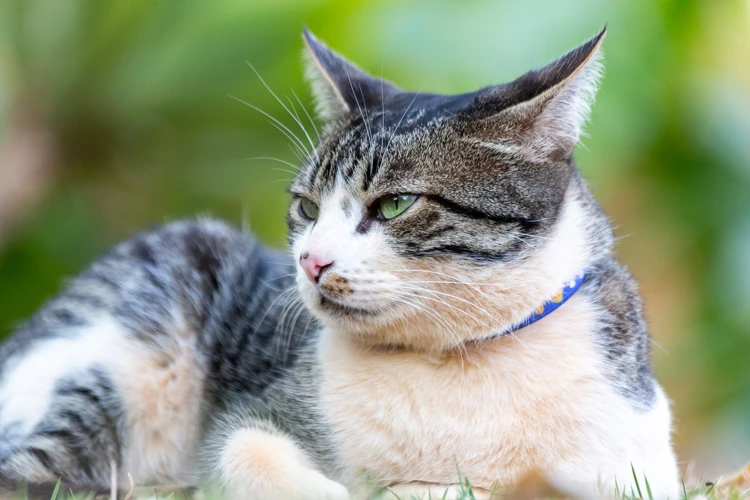
Breeding American Wirehairs can be a rewarding experience, but it also comes with its own set of challenges that breeders need to be prepared for. Some of the challenges that breeders commonly face include genetic disorders, environmental factors, and keeping up with breeder standards.
Genetic Disorders: One major challenge breeders face is genetic disorders. American Wirehairs, like other cat breeds, are prone to certain genetic disorders such as polycystic kidney disease, hypertrophic cardiomyopathy, and progressive retinal atrophy. Breeders need to be aware of these disorders and take steps to screen their breeding cats for them. This can be a time-consuming and costly process, but it is important to ensure the health of the kittens and the integrity of the breed.
Environmental Factors: Another challenge that breeders face is environmental factors. A breeding environment that is too hot, too cold, too humid, or too stressful can negatively affect the health and well-being of the breeding cats and their kittens. Breeders need to ensure that their cats have a clean and comfortable living environment, access to fresh water and food, and plenty of opportunities for exercise and play.
Keeping Up with Breeder Standards: Finally, breeders need to stay up-to-date with breeder standards. The standards for American Wirehair breeding can change over time, and it is important for breeders to stay current with the latest guidelines. This can involve attending cat shows and breeder conferences, networking with other breeders, and keeping up with the latest research on American Wirehair genetics and health.
Despite these challenges, many breeders find the experience of breeding American Wirehairs to be incredibly rewarding. By taking steps to address these challenges, breeders can ensure the health and well-being of their cats and produce kittens that are healthy, happy, and meet the highest standards of the breed.
Genetic Disorders
Breeding American Wirehair cats, like with any other breed, carries the risk of genetic disorders that can affect the health and vitality of the offspring. It can be a perplexing situation for breeders who want to produce strong and healthy kittens, but are hampered by the presence of genetic disorders. Understanding the potential genetic disorders and the factors that predispose these disorders can help breeders improve their breeding strategies and minimize the risk of inherited diseases in their breeding lines. In this section, we will explore some common genetic disorders associated with American Wirehair breeding and discuss strategies for managing these challenges to improve breeding outcomes and kitten health.
Environmental Factors
Strong environmental factors can have a significant impact on the success of American Wirehair breeding. Such factors encompass various physical and biological conditions that surround the breeding environment. Here are some key environmental factors that breeders should consider:
| Environmental Factor | Description |
|---|---|
| Temperature | The ideal temperature for American Wirehair breeding is between 65°F and 78°F. High temperature levels can cause stress to the cats, lead to heat stroke, or even affect fertility. |
| Humidity | American Wirehairs thrive in moderate humidity levels, around 40 to 70 percent. High humidity can lead to respiratory problems, while low humidity can cause dry skin and dehydration. |
| Cleanliness | Sanitation is crucial to a successful breeding program. A clean and hygienic environment will help prevent the spread of diseases and reduce stress levels among the cats, which can impact their breeding cycles. |
| Noise level | A quiet and peaceful environment is key to keeping American Wirehairs calm and relaxed. Loud noises, such as construction or loud music, can lead to stress and anxiety, impacting their behavior and breeding success. |
| Lighting | Proper lighting is essential for American Wirehair breeding. Cats need sufficient natural light to regulate their internal clocks and balance hormones that contribute to their reproductive function. Supplementing with artificial light may be necessary in darker seasons or locations. |
It is important to note that environmental factors can vary depending on the location and the season. Breeders must be vigilant and monitor the environment’s conditions frequently to maintain optimal standards. By ensuring that the cats’ environment is suitable for breeding, breeders can help minimize environmental stress factors and enhance their American Wirehair breeding success.
Keeping Up with Breeder Standards
Breeders of American Wirehair cats must keep up with constantly changing standards in order to ensure successful breeding. Standards dictate what characteristics a cat must possess in order to be deemed a purebred American Wirehair. These standards are set by breeding associations, such as the Cat Fanciers’ Association (CFA).
1. Stay Up-to-Date: Breeder standards are constantly evolving. Standards that were once prevalent may no longer be desired. It is important for breeders to stay up-to-date on the latest standards. This includes attending cat shows and conferences to learn about breeding trends and new standards.
2. Genetics: Breeders must also stay informed about the genetic makeup of the American Wirehair and any changes that may affect breeding. This information could include new genetic tests or information regarding potential genetic disorders.
3. Networking: Networking with other breeders is crucial in understanding breeder standards. This allows them to see what other breeders are doing, discuss challenges, and learn from their experiences.
4. Research: Breeders must research breeding records and bloodlines to improve the breed. By researching the pedigree of potential mates, breeders can avoid breeding cats that are too genetically similar.
5. Evaluate: Reflecting on breeding successes and failures is crucial in maintaining breeder standards. Evaluating past litters can offer insight into what strategies were successful and which ones need to be reevaluated.
6. Ethics: Finally, it is important for breeders to uphold ethical breeding practices. This includes being honest about potential genetic disorders or health issues, and ensuring that their cats are always provided with appropriate care and attention. By adhering to ethical breeding practices, breeders can help maintain the integrity of the American Wirehair breed.
Handling Breeding Failures
Breeding is an intricate process that can encounter some failures along the way. While American Wirehair Breeding may provide unique challenges, it’s not uncommon for breeders to face setbacks while trying to generate healthy and high-quality litters. When a breeding attempt fails, it’s important for breeders to take a step back and evaluate the situation with a holistic approach.
Taking a Holistic Approach
When a breeding attempt fails, breeders should evaluate the situation from multiple perspectives. It’s important for breeders to consider any factors that could have led to the failure, such as genetics, nutrition, and environmental factors. Breeders should also turn to experts for advice on possible causes and solutions to the problem. A holistic approach can ensure that breeders consider all aspects of the situation when developing a plan for future breeding.
Consulting with a Veterinarian
If a breeding attempt fails, breeders should consult with a veterinarian who specializes in reproductive health. A veterinarian can help identify any underlying health conditions in the potential sire and dam that could have contributed to the failure. They can also perform a thorough evaluation of both animals to rule out any health issues that may have led to the failure. Consulting with a veterinarian can provide insight and possible solutions to solve the problem.
Reevaluating Breeding Strategies
When a breeding attempt fails, it’s important to take a different approach. Breeders should evaluate their breeding program, assess their breeding pairs, and determine if any changes are necessary. Breeders should also consider implementing new techniques that could improve their chances of success, such as artificial insemination or genetic testing. Reevaluating breeding strategies can help breeders improve their breeding program and increase their chances of success.
Breeding failures are not uncommon in American Wirehair breeding, or any other breed for that matter. When a breeding attempt fails, breeders should take a holistic approach, consult with a specialist, and reevaluate their breeding strategies. Understanding the reasons for failure can help breeders make the necessary changes to avoid future failures and produce healthy, high-quality litters.
Taking a Holistic Approach
When it comes to handling breeding failures, it’s essential to take a broader perspective. This means focusing not only on the physical health of the American Wirehair cats but also their emotional and environmental needs. A holistic approach involves taking into account the interrelated factors that contribute to breeding success and failure. By embracing this perspective, breeders can develop a better understanding of how to address challenges and improve the chances of producing healthy litters. Let’s dive deeper into what a holistic approach to American Wirehair breeding entails.
Consulting with a Veterinarian
Consulting with a veterinarian is an essential step in handling breeding failures. Veterinarians are trained professionals who can offer valuable insights into the health and genetic issues that may be affecting the American Wirehair breeding success. Here are some tips to keep in mind when consulting with a veterinarian:
- Choose the right vet: Look for a vet who is experienced in working with cats, especially American Wirehairs. They should be familiar with the breed’s unique characteristics and potential health issues. It’s also important to choose a vet who is willing to work with breeders and offer advice on breeding strategies.
- Discuss your breeding practices: Provide your veterinarian with details about your breeding program, including the health history of your cats, the breeding pairs you have used, and any genetic tests you have conducted. This information can help your vet identify any potential health issues that may be impacting your breeding success.
- Get a thorough examination: Your veterinarian should conduct a comprehensive physical exam of your cats to identify any underlying health issues that may be affecting their ability to breed successfully. They may also conduct genetic testing to identify any hereditary conditions that are contributing to breeding failures.
- Develop a treatment plan: If your vet identifies any health or genetic concerns, they can help you develop a treatment plan to address these issues. This may include medication, dietary changes, or surgical interventions. Your vet can also offer advice on how to adjust your breeding practices to account for any health or genetic issues that are impacting your breeding success.
- Follow up regularly: It’s important to maintain a close relationship with your veterinarian and schedule regular check-ups for your cats. This can help identify any new health or genetic issues that may be affecting your breeding success and ensure that your cats are healthy and happy.
Consulting with a veterinarian is an important step in handling breeding failures with American Wirehairs. By choosing the right vet, discussing your breeding practices, getting a thorough examination, developing a treatment plan, and following up regularly, you can improve breeding success and ensure that your cats are healthy and happy.
Reevaluating Breeding Strategies
Breeding is a complex process, and sometimes, despite the best efforts of the breeder, things don’t go as planned. In such cases, it might be necessary to reevaluate the breeding strategies and make some changes to improve the chances of success.
One important aspect to consider when reevaluating breeding strategies is the selection of breeding stock. Assessing the genetic profile of potential breeding cats is crucial to reduce the risk of passing on potentially harmful traits to offspring. Conducting genetic tests can help to identify any potential health issues or genetic disorders the cats might carry, which can help to make informed breeding decisions.
Another important factor to consider when reevaluating breeding strategies is the breeding environment. Poor breeding conditions such as overcrowded or unsanitary living conditions, lack of socialization and poor nutrition can impact the overall health and well-being of cats resulting in unsuccessful breeding attempts. Ensuring that the breeding environment is clean, stress-free and conducive to healthy breeding is important.
Additionally, a breeder must consider the reproductive cycle of their cats when reevaluating breeding strategies. Understanding the reproductive patterns of cats, including the optimal breeding window, can be valuable in avoiding unsuccessful breeding attempts. Careful consideration of the female cat’s hormonal cycle, and regular monitoring of her body temperature or behavior, can help in timing mating more accurately.
Finally, breeding certain cat breeds in general or specific lines within breeds could be more difficult, and it may be necessary to examine other available mating options. Selective breeding with non-related cats or even cats of different breeds to bring in new genes and prevent inbreeding may be necessary. When choosing new mates for breeding, it is important to be thorough in assessing potential risks and benefits, including temperament, health, and breeding history.
Breeder should reevaluate breeding strategies periodically, especially when they experience unsuccessful breeding attempts. It’s important to keep an open mind and be willing to try new strategies or approaches to increase the odds of success. Conducting proper research, assessing genetic profiles, maintaining healthy breeding environments, being mindful of reproductive cycles, and taking guidance from experts can help breeders overcome breeding challenges.
| Factors to Consider when Reevaluating Breeding Strategies |
| Assessing the genetic profile of potential breeding cats |
| Evaluating the breeding environment for optimal breeding conditions |
| Understanding the reproductive patterns and optimal breeding window |
| Choosing new mates from non-related cats or different breeds |
| Maintaining an open mind and seeking guidance from experts |
Conclusion
In conclusion, breeding American Wirehair cats can be a complex and challenging process that requires careful consideration of a multitude of factors. From genetics and environment to breeder selection and training, there are many variables that can affect the outcome of a breeding program.
Despite these challenges, there are several strategies that can help breeders increase their likelihood of success. By focusing on the health and well-being of their cats, considering the reproductive cycle, and establishing a solid breeding plan, breeders can improve their chances of producing healthy, high-quality offspring.
However, there are also several challenges associated with American Wirehair breeding, including genetic disorders, environmental factors, and keeping up with breeder standards. When faced with these challenges, breeders must take a holistic approach and consult with veterinary professionals to reevaluate their breeding strategies.
Overall, while breeding American Wirehair cats may not be easy, it is a rewarding and fulfilling endeavor for those who are passionate about feline genetics and behavior. With careful attention to these key factors and the willingness to adapt to changing circumstances, breeders can achieve success and produce healthy, happy cats for years to come.
Frequently Asked Questions
1. Can American Wirehair Breeds be bred solely for their unique coat texture?
No, the focus of breeding American Wirehairs should be their overall health, temperament, and breed standards. Coat texture should not be the sole factor for breeding.
2. Is it important to have a specific breeding plan when breeding American Wirehairs?
Yes, having a clear breeding plan helps to ensure the health and well-being of the breeding cats while also maintaining breed standards for future generations.
3. How important is selecting the right breeder when looking for an American Wirehair?
Selecting the right breeder is crucial to ensure that you are getting a healthy and well-socialized cat with desirable traits and behaviors.
4. What are some common genetic disorders that can affect American Wirehairs?
Some common genetic disorders in American Wirehairs include hypertrophic cardiomyopathy, hip dysplasia, and progressive retinal atrophy.
5. Can environmental factors affect the breeding of American Wirehairs?
Yes, environmental factors such as temperature, humidity, and nutrition can impact the health and well-being of breeding cats and their offspring.
6. Is it necessary to consult with a veterinarian during the breeding process?
Yes, consulting with a veterinarian can help to ensure that the breeding cats are healthy, and that any potential health issues are addressed promptly.
7. How can a breeder avoid inbreeding and genetic disorders?
Breeders can avoid inbreeding and genetic disorders by carefully selecting mating pairs based on their individual genetic backgrounds, and by regularly screening cats for any potential health concerns.
8. What are some common challenges faced by American Wirehair breeders?
Some common challenges faced by American Wirehair breeders include maintaining breed standards, preventing inbreeding, and addressing potential genetic disorders.
9. Can training and socialization impact the success of American Wirehair breeding?
Yes, training and socialization are important factors in the overall health and well-being of breeding cats and their offspring.
10. How long does the breeding cycle typically last for American Wirehairs?
The breeding cycle typically lasts for around 4-6 weeks, and cats can potentially have litters of 4-6 kittens.

